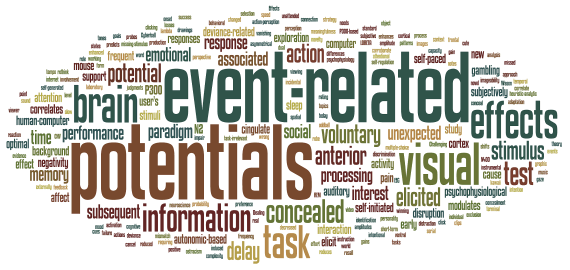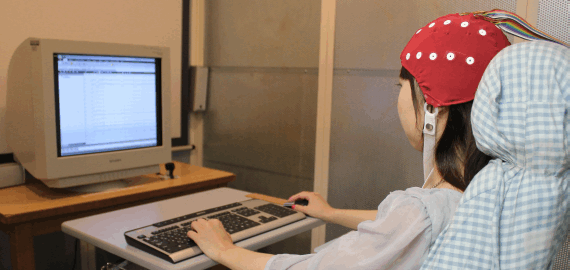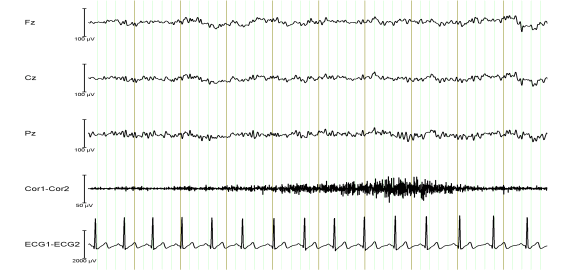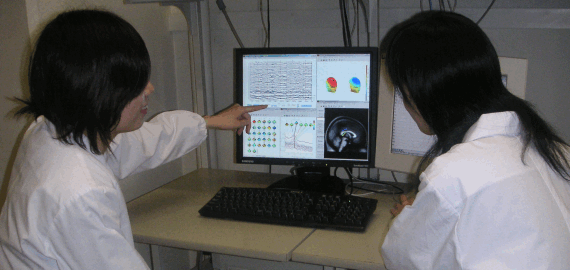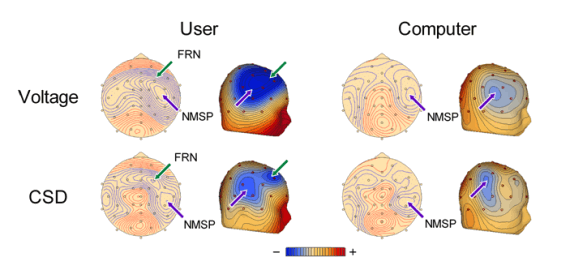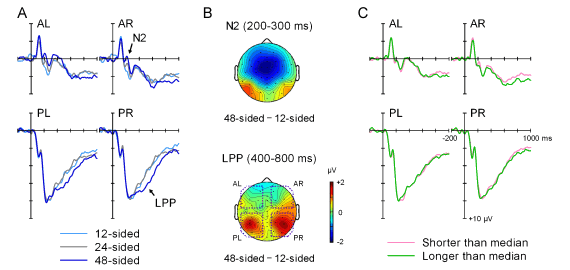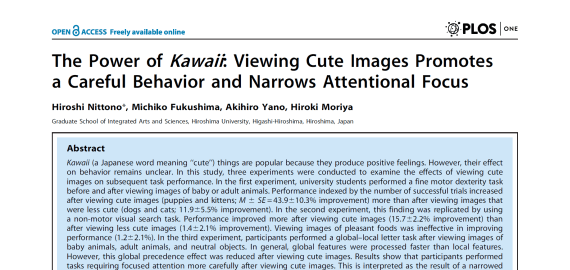Welcome
Cognitive Psychophysiology Laboratory (CPL) was first established at Hiroshima University on April 2005 and has moved to Osaka University since April 2016.
Our primary interest is to deepen the understanding of daily psychological activities by using event-related potentials (ERPs) and other psychophysiological measures.
Recently, we have started to explain kawaii (often translated as “cute”) from a behavioral science perspective.
Hiroshi NITTONO, Ph.D.
Professor of General Psychology
Director of Cognitive Psychophysiology Laboratory
Graduate School of Human Sciences, The University of Osaka
- My Profile and Research Interests
- Publications (ORCID / Google Scholar / Scopus / Web of Science)
- Psychology of Kawaii
- Links
All correspondence about this website should be sent to info [at] cplnet.jp.
History of Major Updates
September 18, 2025. A paper entitled “Which instrument should play here? Decoding predicted musical timbre from EEG signals during omission” was published in Cortex.
September 6, 2025. Our paper “Considering cuteness enhances smiling responses to infant faces” received the best paper award 2025 of the Japanese Psychological Association.
July 30, 2025. A paper entitled “Effects of a robot’s head-tilting motion and hand gesture on the feeling of kawaii toward the robot and its outfit” was published in Advanced Robotics (Online First).
July 24, 2025. A paper entitled “Active inference in music perception: Motor engagement to syncopation modulates rhythmic prediction error” was published in Psychophysiology.
July 16, 2025. A paper entitled “Postural responses to cute animal pictures: The effect of image size” was published in Acta Psychologica.
June 4, 2025. A paper entitled “Reduced subjective and behavioral responses to cuteness in relation to anhedonia” was published in Japanese Psychological Research (OnlineFirst).
June 25, 2025. A paper entitled “Predicted sensory modality determines the timing and topographies of omitted stimulus potentials” was published in Psychophysiology.
June 4, 2025. A paper entitled “Reduced subjective and behavioral responses to cuteness in relation to anhedonia” was accepted in Japanese Psychological Research.
January 31, 2025. A paper entitled “Effects of cardiac and respiratory phases on auditory evoked potentials” was accepted in International Journal of Psychophysiology.
November 29, 2024. A paper entitled “Auditory mismatch negativity is larger during exhalation than inhalation” was published in Medicine.
October 9, 2024. A new paper about music pitch prediction was published in Neuropsychologia.
October 1, 2024. Dr. Kai Ishida joined the lab as an assistant professor.
May 15, 2024. A new paper published in Scientific Reports shows that when a familiar melody is interrupted the sound that should have been heard can be read from brain waves.
April 17, 2024. A new paper entitled “Visual omitted stimulus potentials are not retinotopic” has been published in Neuroscience Letters.
March 27, 2024. A new paper entitled “Considering cuteness enhances smiling responses to infant faces” has been published in Japanese Psychological Research (OnlineFirst).
December 28, 2023. A new event-related potential study on musical expectations has been published in International Journal of Psychophysiology (OnlineFirst).
December 27, 2023. A new article showing that the mismatch negativity does not change between cardiac phases has been published in Psychophysiology (OnlineFirst).
November 10, 2023. A new article on omitted stimulus potentials has been published in Experimental Brain Research (OnlineFirst).
October 18, 2023. A new article demonstrating that two robots look cuter than one robot was published in PLOS ONE.
October 10, 2023 A behavioral study about the effects of response execution and inhibition on subjective preference and approach-avoidance tendency has been published in Peer J.
September 15, 2023 An ERP study of statistical learning of chord progression rules has been published in Neuroscience Letters.
September 4, 2023 A research article that shows infant faces’ cuteness can be perceived even in a upside-down position has been published in Perception (OnlineFirst). [Manuscript]
February 11, 2023 The article entitled “English and Spanish adjectives that describe the Japanese concept of kawaii” has been published in SAGE Open.
January 30, 2023 A research paper that shows discrimination accuracy of facial emotional stimuli is higher while breathing in than breathing out has been published in Psychophysiology.
January 18, 2023 A new animal photobook with my introductory comments has been published in Japan.
January 18, 2023 A new article that shows children’s perceived cuteness can be influenced by their personality descriptions has been published in PLOS ONE.
December 7, 2022 The article “Sex and parental status impacts human-to-pet attachment and caregiving attitudes and behaviors in a Japanese sample” is accepted in Anthrozoös.
November 3, 2022 The article “Examination of morphological traits of children’s faces related to perceptions of cuteness using Gaussian process ordinal regression” is published in Frontiers in Psychology.
October 30, 2022 The article “Relationship between early neural responses to syntactic and acoustic irregularities in music” is accepted in European Journal of Neuroscience.
August 15, 2022 The article “Cosmetic makeup enhances facial attractiveness and affective neural responses” is published in PLOS ONE.
March 10, 2022 Presented a keynote lecture on the psychology of “kawaii” at ACM/IEEE International Conference on Human-Robot Interaction (HRI2022). [Proceedings]
February 18, 2022 The article introducing the Japanese Cute Infant Face (JCIF) dataset has been published in Frontiers in Psychology.
September 14, 2021 The study showing that high-resolution audio and CD-level audio did not produce different responses in the auditory pathway from the ear through the brainstem has been accepted in Neuroscience Letters.
July 28, 2021 The study showing that musical imagery influences early processing of real musical excerpts has been accepted in Neuroscience Letters.
April 6, 2021 Talked to an American podcast, Underunderstood, about Snoopy fandom in Japan.
January 27, 2021 A paper about cross-cultural comparisons of the concept of kawaii and cuteness is published in SAGE Open.
December 18 20, 2020 Our paper that shows time passes slowly when you are concealing something is featured in PsyPost.
December 10, 2020 A paper showing that high-frequency sound components of high-resolution audio are not detected in the cortex was published in Scientific Reports.
October 12, 2020 A preprint (under review) of a cross-cultural comparison of the cute/kawaii is published.
October 10, 2020 A new paper that shows “American people prefer the right-facing image of an object, whereas Japanese and Israeli people prefer the left-facing image” is published in Symmetry.
September 30, 2020 Supervised a kawaii promotion campaign of Japanese famous ice cream, Morinaga Pino, 50 kawaii packages.
July 20, 2020 A new paper that shows time passes slowly when you are concealing something is accepted for publication in Biological Psychology.
July 11, 2020 A new paper showing that eye fixations in a fine motor task were lengthened after viewing cute animal pictures was published in Frontiers in Psychology.
October 30, 2019 My comment on the effect of kawaii/cuteness was cited in OneZero.
August 12, 2019 A new paper that describes the survey about the recognition of “kawaii” in Israel was published in SAGE Open.
June 1, 2019 A new popular science book about kawaii/cuteness is published in Japanese. [Kawaii no chikara (The power of kawaii: A view from experimental psychology)].
April 17, 2019 Featured on a Japanese TV show (Eureka!)
September 10, 2018 A talk on kawaii (Beyond cuteness: A recent advance in the psychology of “kawaii”) was done at Sapienza – Università di Roma, Italy.
July 13, 2017 Comments on kawaii are cited in the article (Behind cuteness/Bag om nuttetheden) published in the July 2017 issue of a Danish Psychologists’ magazine P (Author’s site).
April 19, 2017 A new paper “Psychophysiological responses to kawaii pictures with or without baby schema” was accepted for publication in SAGE Open.
March 23, 2017 Keynote presentation Beyond Cuteness: An Emerging Field of the Psychology of “Kawaii” was done at The Asian Conference on Psychology & the Behavioral Sciences 2017 (Kobe, Japan) [YouTube].
March 18, 2017 Comments were cited in National Geographic’s blog “This Is Why We Find ‘Ugly’ Animals Cute.“
February 24, 2017 A new paper “The light-makeup advantage in facial processing: Evidence from event-related potentials” was published in PLoS ONE.
Janurary 20-24, 2017 Kawaii Research Society Japan had an exhibition booth at MAISON&OBJET PARIS.
January 13, 2017 A new article about the effects of high-resolution audio on human psychophysiological states was accepted for publication in Frontiers in Psychology.
August 31-September 4, 2016 The 18th World Congress of Psychophysiology (IOP2016) took place in Havana, Cuba.
July 27, 2016 Invited address “Kawaii as an emotion: Understanding the effects of cuteness on human cognition and behavior” at ICP2016 was done successfully.
July 19, 2016 Comments are cited in the guardian’s article “The New Science of Cute.”
April 28, 2016 My review paper on kawaii was published online as Open Access.
April 1, 2016 The lab moved to Osaka University.
March 23, 2016 My activity at Hiroshima University is terminated today. Thank you very much for your support.
March 3, 2016 Comments are cited in Bloomberg Business’s column “Kittens, Cacti, and a Blue Glow: The Science Behind a Perfectly Productive Cubicle“
October 13, 2015 Comments are cited in National Geographic’s blog “When We See Something Cute, Why Do We Want to Squeeze It?“
April 1, 2015 The final year at Hiroshima University has just been started. I’ll do my best to round off the current work.
January 18, 2015 Author manuscript of an integrative review article on the two-layer model of kawaii (to be published in East Asian Journal of Popular Culture) is uploaded.
September 27, 2014 17th World Congress of Psychophysiology (IOP2014) has been closed with a great success. Thank you for your cooperation!
September 26, 2014 My comment on the feeling of kawaii for furry animals was featured in a Finnish paper.
June 5, 2014 A new paper showing that speeding up the tempo of background sounds accelerates the pace of behavior was accepted in Psychology of Music.
May 27, 2014 The inside story of our PLoS ONE kawaii paper was published on a new online journal (The Winnower).
May 19, 2014 A new paper that identified at least two subcomponents of the Late Positive Potentials was accepted in Clinical Neurophysiology.
February 23, 2014 A new paper about the effect of high-resolution music on human EEG was accepted in NeuroReport.
May 20, 2013 Total Citation Count (by Thomson Reuters ISI) exceeds 500. I’ll keep going slowly at my own pace.
May 4, 2013 The website is relaunched with a new design!
March 11, 2013 The official website of the 17th World Congress of Psychophysiology (IOP2014) in Hiroshima is open.
January 16, 2013 Featured in Psychology World (an official publication of the Japanese Psychological Association). [PDF in Japanese]
December 28, 2012 Featured in “Research Now” on the official website of Hiroshima University.
December 12, 2012 A graduate student awarded a Student Poster Award at HCG2012 (Human-Communication Group symposium).
December 3, 2012 Japanese Journal of Physiological Psychology and Psychophysiology has become an Open Access Journal of J-STAGE. The links from the publication list were updated.
October 16, 2012 Our PLoS ONE paper was reported by more than 70 articles worldwide (Media coverage. Ranked second among the most viewed PLoS ONE papers in the last 30 days.
September 27, 2012 A paper that demonstrates that viewing kawaii (cute) things makes us more attentive was published in PLoS ONE.
September 12, 2012 IOP2014 (17th World Cogress of Psychophysiology) will be held in Hiroshima, Japan (September 23-27, 2014). I’m serving as Executive Committee Chairman.
January 23, 2012 Two papers were accepted for publication in Biological Psychology and NeuroReport.
June 7, 2011 IOP2012 (16th World Cogress of Psychophysiology) will be held in Pisa, Italy (September 13-17, 2012).
May 6, 2011 Several papers written by graduate students were accepted for publication.
March 24, 2011 The Statistical Analysis section in the Q & A was revised (Japanese version only).
March 3, 2011 Stepped down from the Editorial Board of International Journal of Psychophysiology after six and half years of service.
February 17, 2011 A paper written by a graduate student was accepted for publication.
August 18, 2010 Moved to an independent domain (cplnet.jp).
July 20, 2010 Invalid links are updated.
May 16, 2010 Our paper (in Japanese) received the Best Paper Award 2009 of the Japanese Journal of Physiological Psychology and Psychophysiology. Thank you!
April 6, 2010 The website was rearranged and extended.
January 20, 2010 Publication list in Pubmed was added.
October 13, 2009 A new paper (in Japanese) was accepted for publication.
September 8, 2009 Publication list by ResearcherID (Thomson Reuters) was added.
August 24, 2009 An erratum of the ERP book was corrected.
July 3, 2009 Featured in a newsletter of Hiroshima University (Japanese version only)
June 8, 2009 A new paper was accepted for publication.
May 18, 2009 Two papers written by graduate students were accepted for publication.
June 25, 2008 “What’s new in our lab” is added on the Japanese toppage.
June 9, 2008 A new paper was accepted for publication in NeuroReport.
April 1, 2008 Laboratory Information (Japanese version only) was updated.
January 30, 2008 An article titled “Effects of filtering on event-related potential waveforms” (in Japanese) was accepted for publication.
April 5, 2007 Laboratory Information (Japanese version only) was updated.
August 11, 2006 Features of three major electrode caps were compared in the Q & A section (Japanese version only).
July 28, 2006 Photos of our lab were uploaded (Japanese version only).
June 23, 2006 The Statistical Analysis section in the Q & A was corrected (Japanese version only).
February 21, 2006 Laboratory Information (Japanese version only) was added.
October 11, 2005 The erratum page (Japanese version only) was added.
April 1, 2005 The website was relaunched.


